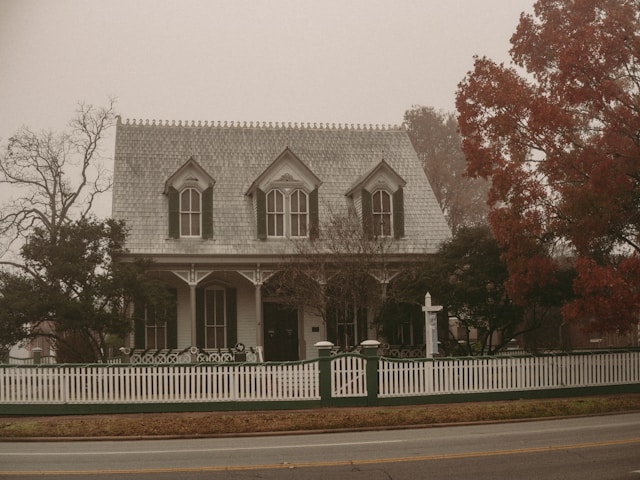Buying a home is an exciting and often overwhelming experience. For first-time buyers, the process can feel like a maze of decisions, negotiations, and endless paperwork. Among the many choices that need to be made, one of the most significant decisions revolves around the age of the home. While newer homes may seem like the safer option, many buyers are drawn to the charm and character of older, aging homes.
However, there are important considerations to keep in mind before committing to an aging property. In places like Franklin, Tennessee, where historical homes and classic architecture are common, buyers often find themselves enticed by the appeal of vintage properties.
This article aims to shed light on the key aspects that first-time buyers should know about purchasing an aging home, focusing on everything from potential repairs to long-term maintenance costs.
The Importance of a Thorough Inspection
When purchasing an aging home, the first step is always to ensure a thorough inspection is completed. Older homes often come with hidden issues that may not be immediately apparent during a walk-through. Common problems such as outdated plumbing, electrical systems, or structural issues could cost thousands to repair down the line. By hiring a professional inspector, you can identify any red flags and make an informed decision.
During the inspection, pay close attention to the foundation, roof, and electrical wiring.
Roof Considerations for Aging Homes
One of the most critical areas to assess in an older home is the roof. Roofs have a finite lifespan, and over time, the materials that make up the roof can degrade, leading to leaks, water damage, or even total failure. When it comes to the roof replacement cost in Franklin, it’s important to keep in mind that the age and condition of the roof are key factors in determining the expense. The cost of replacing a roof can vary significantly depending on the materials used, the size of the roof, and whether there are any additional repairs needed to address underlying structural damage.
Before purchasing an older home, it’s essential to check how old the roof is and whether it has been replaced recently. A roof that’s nearing the end of its lifespan could be a major expense within the first few years of owning the property, so it’s crucial to plan. If the home’s roof has already been replaced, confirm that it was done correctly and that it meets modern standards for insulation and waterproofing.
Plumbing and Electrical Systems
Older homes may still be equipped with outdated plumbing and electrical systems. Plumbing issues can be costly to repair, especially if the pipes are made from outdated materials like galvanized steel or cast iron, which are prone to corrosion. Similarly, electrical wiring in older homes may not be up to code, posing a fire risk and potentially requiring expensive upgrades to meet modern standards.
Before purchasing an aging home, make sure to have a licensed plumber and electrician inspect the property. They can identify any potential issues with the systems and provide an estimate for repairs or upgrades. In some cases, it may be necessary to rewire the entire house or replace old plumbing, both of which can be costly and time-consuming projects.
Energy Efficiency and Insulation
Energy efficiency is another important factor to consider when buying an aging home. Older homes may not have the same level of insulation or energy-efficient features as newer homes. This can result in higher heating and cooling costs, as well as discomfort during extreme weather conditions.
When evaluating an older home, check the insulation in the attic, walls, and basement. If the home lacks proper insulation, you may need to invest in retrofitting the property to improve energy efficiency. Additionally, consider the age of the windows and doors. Single-pane windows and drafty doors can contribute to energy loss and should be replaced with more energy-efficient options if necessary.
Maintenance Costs Over Time
One of the biggest challenges of owning an aging home is the ongoing maintenance required to keep it in good condition. While a newer home may require fewer repairs in the first few years, an older home is likely to need constant attention. From small cosmetic updates to major structural repairs, the costs can add up quickly.
To avoid unexpected expenses, it’s important to budget for regular maintenance and repairs. Keep in mind that certain elements of the home, such as the foundation, roof, plumbing, and electrical systems, may need to be addressed more frequently in older homes. Setting aside a portion of your budget for these inevitable repairs will help ensure that you’re not caught off guard by large, unexpected bills.
Potential for Renovations and Customization
One of the main appeals of purchasing an aging home is the potential for renovations and customization. Older homes often come with unique architectural features and layouts that can be updated to suit modern tastes. For first-time buyers, this can be an exciting opportunity to put a personal touch on the property.
However, before embarking on any renovations, it’s important to understand the limitations of the home’s structure and the costs involved. Major renovations, such as tearing down walls or expanding the living space, can be expensive and time-consuming. Always work with a contractor to get an accurate estimate of the costs involved, and be sure to factor these expenses into your overall budget.
The Charm and Character of Aging Homes
While there are many practical considerations when buying an aging home, one of the most significant draws is the charm and character that these homes often possess. From hardwood floors to intricate moldings, older homes can have a warmth and personality that newer homes can’t match. Many buyers are willing to overlook potential issues in exchange for these unique qualities.
That said, it’s important to strike a balance between appreciating the character of the home and understanding the financial and time commitments involved in maintaining it. If you fall in love with the charm of an older home, be prepared for the realities of ownership, including repairs, maintenance, and occasional surprises.
For first-time buyers, purchasing an aging home can be a rewarding experience, but it’s essential to approach the process with a realistic understanding of what’s involved. An aging home may require significant repairs and regular maintenance, but it can also offer character, charm, and the opportunity to make the property your own. By carefully considering the roof, plumbing, electrical systems, insulation, and long-term maintenance costs, first-time buyers can make an informed decision that aligns with their budget and lifestyle.












